Matthijs Westera
Does referent predictability affect the choice of referential form? A computational approach using masked coreference resolution
Sep 27, 2021

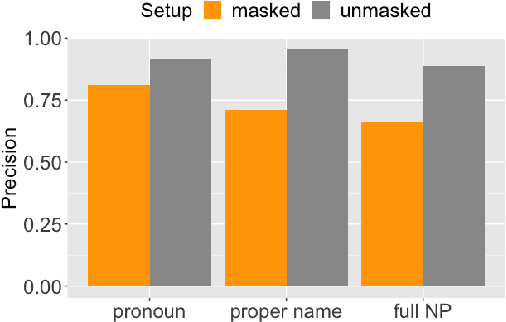

Abstract:It is often posited that more predictable parts of a speaker's meaning tend to be made less explicit, for instance using shorter, less informative words. Studying these dynamics in the domain of referring expressions has proven difficult, with existing studies, both psycholinguistic and corpus-based, providing contradictory results. We test the hypothesis that speakers produce less informative referring expressions (e.g., pronouns vs. full noun phrases) when the context is more informative about the referent, using novel computational estimates of referent predictability. We obtain these estimates training an existing coreference resolution system for English on a new task, masked coreference resolution, giving us a probability distribution over referents that is conditioned on the context but not the referring expression. The resulting system retains standard coreference resolution performance while yielding a better estimate of human-derived referent predictability than previous attempts. A statistical analysis of the relationship between model output and mention form supports the hypothesis that predictability affects the form of a mention, both its morphosyntactic type and its length.
Don't Blame Distributional Semantics if it can't do Entailment
May 17, 2019Abstract:Distributional semantics has had enormous empirical success in Computational Linguistics and Cognitive Science in modeling various semantic phenomena, such as semantic similarity, and distributional models are widely used in state-of-the-art Natural Language Processing systems. However, the theoretical status of distributional semantics within a broader theory of language and cognition is still unclear: What does distributional semantics model? Can it be, on its own, a fully adequate model of the meanings of linguistic expressions? The standard answer is that distributional semantics is not fully adequate in this regard, because it falls short on some of the central aspects of formal semantic approaches: truth conditions, entailment, reference, and certain aspects of compositionality. We argue that this standard answer rests on a misconception: These aspects do not belong in a theory of expression meaning, they are instead aspects of speaker meaning, i.e., communicative intentions in a particular context. In a slogan: words do not refer, speakers do. Clearing this up enables us to argue that distributional semantics on its own is an adequate model of expression meaning. Our proposal sheds light on the role of distributional semantics in a broader theory of language and cognition, its relationship to formal semantics, and its place in computational models.
What do Entity-Centric Models Learn? Insights from Entity Linking in Multi-Party Dialogue
May 16, 2019
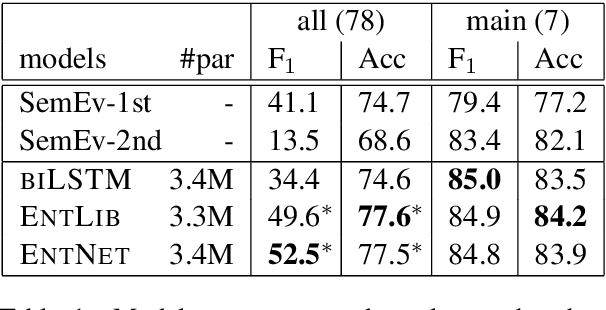
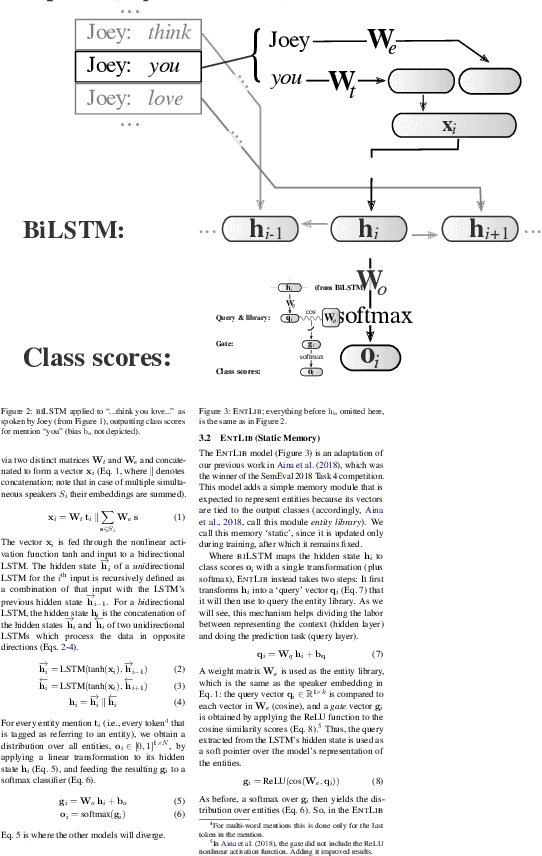
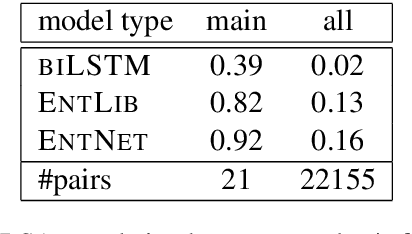
Abstract:Humans use language to refer to entities in the external world. Motivated by this, in recent years several models that incorporate a bias towards learning entity representations have been proposed. Such entity-centric models have shown empirical success, but we still know little about why. In this paper we analyze the behavior of two recently proposed entity-centric models in a referential task, Entity Linking in Multi-party Dialogue (SemEval 2018 Task 4). We show that these models outperform the state of the art on this task, and that they do better on lower frequency entities than a counterpart model that is not entity-centric, with the same model size. We argue that making models entity-centric naturally fosters good architectural decisions. However, we also show that these models do not really build entity representations and that they make poor use of linguistic context. These negative results underscore the need for model analysis, to test whether the motivations for particular architectures are borne out in how models behave when deployed.
AMORE-UPF at SemEval-2018 Task 4: BiLSTM with Entity Library
May 14, 2018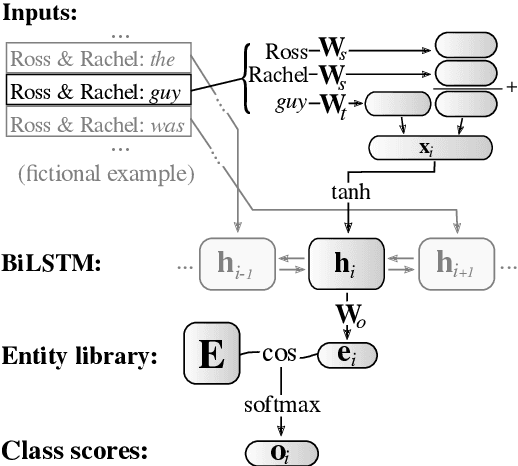

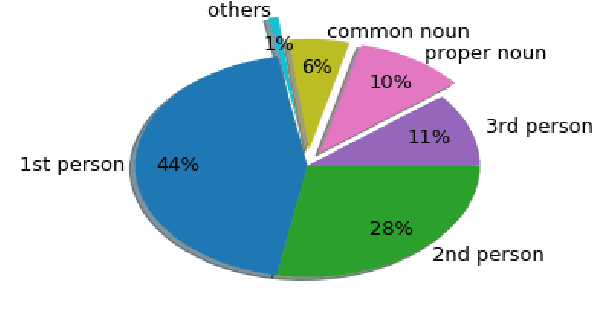
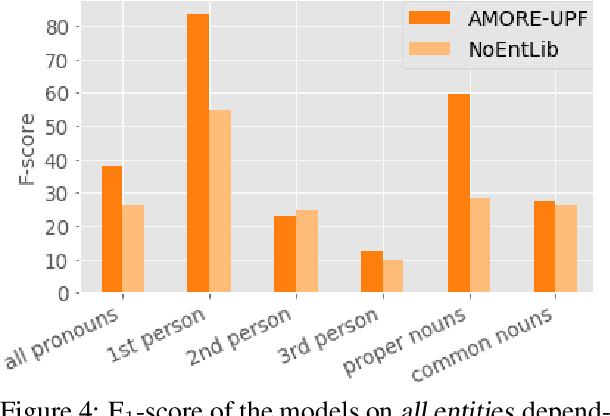
Abstract:This paper describes our winning contribution to SemEval 2018 Task 4: Character Identification on Multiparty Dialogues. It is a simple, standard model with one key innovation, an entity library. Our results show that this innovation greatly facilitates the identification of infrequent characters. Because of the generic nature of our model, this finding is potentially relevant to any task that requires effective learning from sparse or unbalanced data.
 Add to Chrome
Add to Chrome Add to Firefox
Add to Firefox Add to Edge
Add to Edge